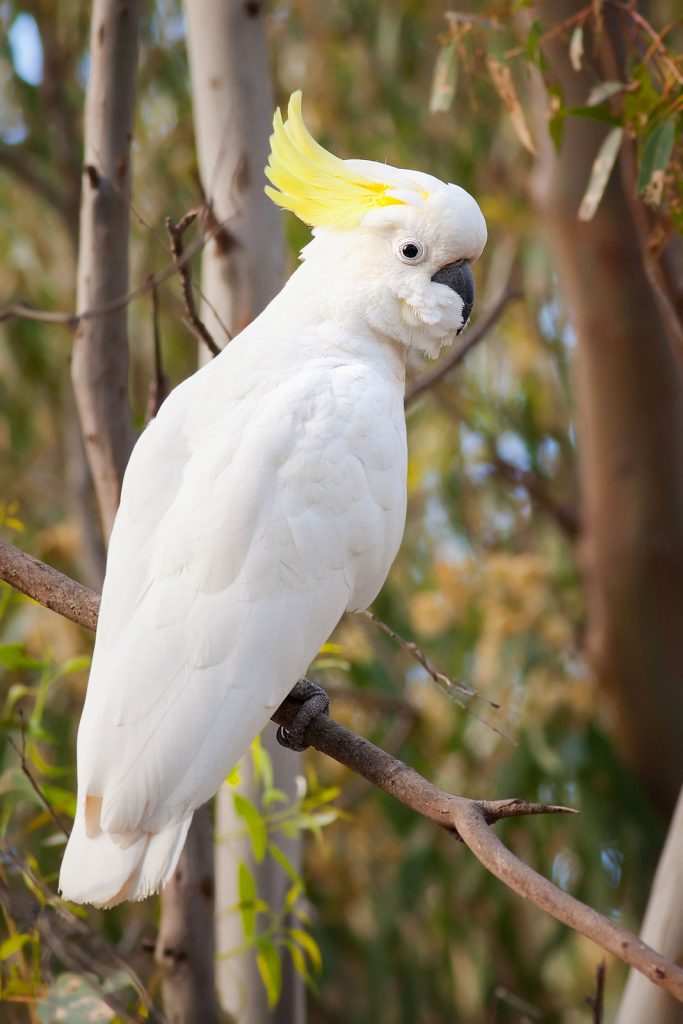Scientific Name
Cacatua galerita
Also Called: White Cockatoo
Description
The Greater Sulfur Crested Cockatoo is probably the best known of all Cockatoos. It is also the largest. It is white colored with the tail feathers and underside of the wings being yellow. The head is crowned by a bright sulfur-yellow crest, which curves upwards. This crest open ups like a fan when the bird is alarmed. The sexes can be told apart by the colors of the eyes. A male has a very dark, blackish eye, while the females are more brown. They reach a length up to 20 inches. They are often confused with their similar sounding relative – the cockatiel.
Food
The Greater Sulfur Crested Cockatoo forages in forests and farmlands, feeding on seeds, fruit, nuts, roots and insects and their larvae. The Cockatoo is sometimes considered a pest by farmers, since it digs up the newly sown seeds and raid ripening crops.

Habitat
The Greater Sulfur Crested Cockatoo is native to Australia, New Guinea and the Aru Islands. It is found in a diversity of environments, such as the forest, savanna, swamp or farmland. The Cockatoo prefers nesting in large old trees with hollows, often near water.
Social Structure
For most of the year, The Greater Sulfur Crested Cockatoo lives in flocks of up to hundreds of birds. Early in the morning the birds fly to a watering place to drink. From there it can fly long distances to look for food. While most of the birds feed on the ground, a few of them will stay in the trees to look for danger. If an intruder approaches, the lookouts screech loudly and the whole flock flies away. At sundown, the birds return to the trees, where they perch overnight. During mating season, the flock split up in small groups and pairs. To attract a female, the male struts towards the female with his crest fanned out. He moves his head in a figure-eight pattern and make soft, chattering noises. The pair bond by preening each other and touching each other’s bills.
Birth & Offspring
The Greater Sulfur Crested Cockatoo nests in a hollow limb in a large tree or a cliff hole. The female lays two or three white, elliptical eggs. Both the male and the female help incubating the eggs. The eggs hatch after about 30 days. After 40 days, the nestlings are ready to leave the nest.
Senses
This intelligent bird is very popular in the pet industry, since it can learn to imitate sounds and perform tricks. It has a raucous screeching call.

Lydia King is a huge animal lover and has always been fascinated with learning about the animal kingdom. She enjoys writing about anything animal related from scientific information about rare species to animal references in pop culture.











